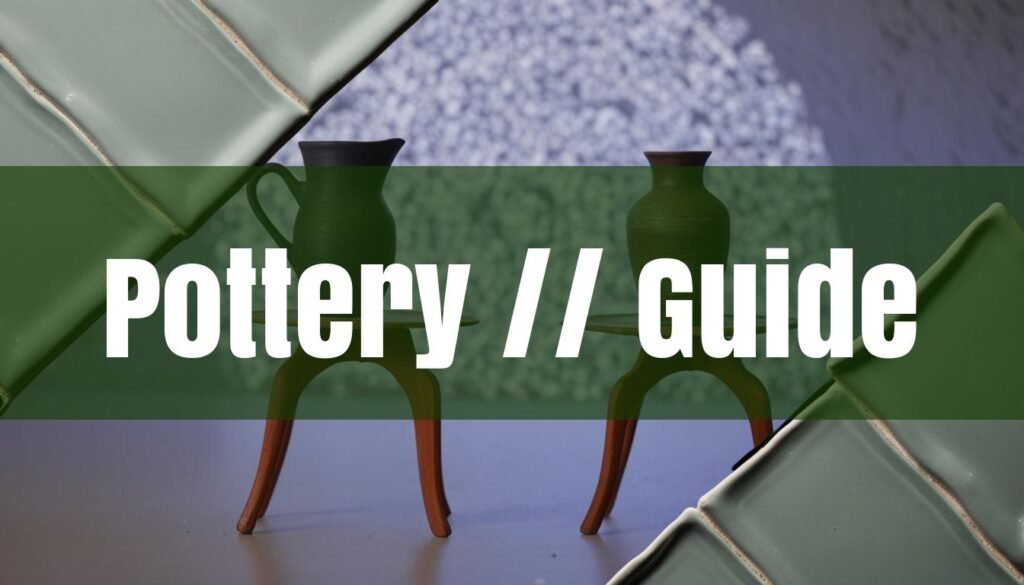So, you’re eager to dive into the world of pottery but unsure where to begin? You’re not alone! Finding the right space and resources is crucial for nurturing your pottery passion. Whether you dream of mastering the pottery wheel or prefer the tactile joy of hand-building, this guide will explore various options, from community studios to home setups, helping you find the perfect place to make pottery.
Community and Pottery Studios: A Hub for Creativity
One of the most accessible and enriching options for aspiring potters is joining a community art center or a dedicated pottery studio. These spaces offer a supportive environment with access to essential equipment such as pottery wheels and kilns, which can be a significant barrier for beginners. Beyond the equipment, these studios provide a valuable sense of community. You’ll be surrounded by fellow artists, from beginners to seasoned professionals, creating a space for shared learning and inspiration.
Many studios offer classes and workshops, perfect for those just starting out or looking to refine their skills. Instructors can provide guidance on various techniques, from wheel throwing to hand-building methods like pinching, coiling, and slab construction. These classes can also cover essential topics such as clay selection, glazing techniques, and kiln operation. Moreover, the opportunity to interact with other potters can lead to invaluable tips, tricks, and shared experiences, fostering a collaborative and encouraging atmosphere. The cost of membership or classes can vary, so it’s worth researching local options to find one that fits your budget and artistic goals.
The beauty of a community studio lies not only in its resources but also in its ability to spark creativity. Seeing the diverse projects and approaches of other artists can broaden your own artistic horizons and inspire you to experiment with new forms, glazes, and techniques. Furthermore, many studios host exhibitions and sales, providing opportunities to showcase your work and connect with the wider art community. This exposure can be incredibly motivating and help you gain confidence in your pottery journey.
Setting Up a Home Studio: Crafting in Your Own Space
For those seeking more independence and flexibility, setting up a home pottery studio can be an appealing option. However, it’s essential to carefully consider the space requirements, equipment needs, and potential costs involved. A dedicated space, whether it’s a spare room, garage, or shed, is ideal to avoid disrupting other household activities. Pottery can be a messy endeavor, so having a designated area will help contain the clay dust and water splashes.
The essential equipment for a home studio includes a pottery wheel, a kiln, work tables, shelving for storing clay and finished pieces, and a sink for cleaning tools and hands. A pottery wheel is central to creating symmetrical forms like bowls and vases, while a kiln is necessary for firing your creations to harden the clay and set the glaze. These are significant investments, so it’s worth researching different models and considering used equipment to save costs. Hand-building techniques, such as pinch pots, coil building, and slab construction, offer alternatives that don’t require a wheel and can be a great starting point. For more information, check out this guide to mastering hand-building pottery.
In addition to the larger equipment, you’ll need a variety of smaller tools, such as ribs, scrapers, sponges, fettling knives, and wire cutters, to shape, smooth, and refine your pottery. Proper ventilation is also crucial, especially when working with clay dust and glazes. A dust collection system or a well-ventilated room can help minimize the risk of respiratory issues. The initial investment for a home studio can be substantial, but it offers the freedom to create on your own schedule and experiment with different techniques at your own pace.
Workshops and Classes: Short-Term Immersions
If you’re not ready to commit to a studio membership or setting up a home studio, workshops and classes offered by local artists or institutions can be a great alternative. These shorter-term options provide access to equipment and instruction without the long-term commitment. Workshops often focus on specific techniques or projects, such as creating pinch pots, coil baskets, or slab-built items. For more information, check out this guide to teaching pottery classes.
Classes typically run for several weeks or months, providing a more comprehensive introduction to pottery. Instructors can guide you through the basics of clay preparation, wheel throwing or hand-building, glazing, and firing. These classes can also offer a supportive environment to learn from other students and receive feedback on your work. Workshops and classes can be found at community centers, art schools, universities, and private studios.
The cost of workshops and classes varies depending on the length, materials, and instructor. It’s worth checking reviews and testimonials to find a class that aligns with your learning style and artistic goals. Workshops and classes can be an excellent way to test the waters, learn new skills, and connect with other potters before making a larger investment in studio space or equipment. They also provide a structured learning environment with expert guidance, which can be particularly beneficial for beginners.
No matter where you choose to make pottery, remember that the most important thing is to enjoy the process. Pottery is a journey of experimentation, discovery, and self-expression. Don’t be afraid to make mistakes, learn from them, and celebrate your progress along the way. With dedication and the right environment, you can nurture your pottery skills and create beautiful, unique ceramic art.





